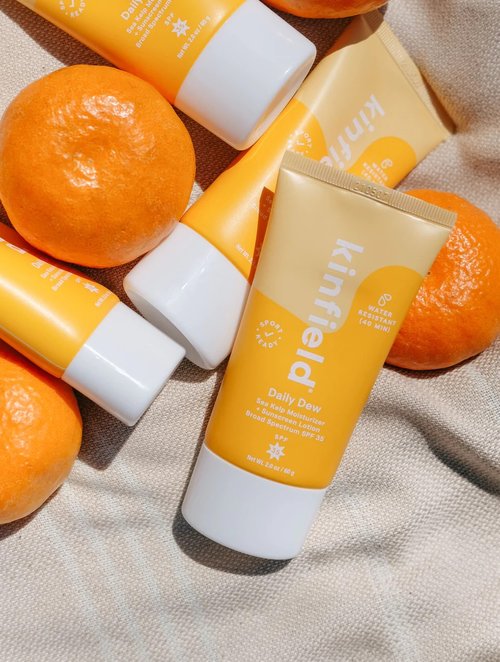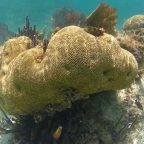
The importance of sunscreen comes as no surprise. It protects your skin from the sun’s harmful UV radiation and helps prevent skin cancer, making it an essential part of daily skincare. But what you may not know is that many of the sunscreen brands stocked at your local chemist or drugstore are made with toxins that endanger a critically important ocean ecosystem.
Every year, up to 14,000 tons of sunscreen residue make their way into the ocean and contaminate coral reefs. Despite having a hard exoskeleton that gives them a plant-like appearance, coral reefs are actually made up of colonies of small animals called polyps. Often referred to as the rainforests of the sea, they shelter more than a quarter of marine life, making them among the most diverse ecosystems on the planet. Species such as crabs, sponges, oysters and fish are but a few that have made coral reefs their home.

Maintaining coral reef health is crucial to preserving this biodiversity, but toxic chemicals in the ocean have made them increasingly prone to bleaching. Coral bleaching happens when an algae called zooxanthellae leaves the coral due to environmental stressors, which can include the absorption of toxic chemicals. Without the algae the coral loses its main source of food and its color. This interferes with coral reproduction and leaves it defenseless against disease.
Though chemical sunscreens aren’t the main cause of coral bleaching, they aggravate the bleaching caused by warming seas. Avoiding sunscreens with toxic chemicals is one of the best ways to protect our coral reefs, which is why places like Hawaii, the U.S. Virgin Islands, and Aruba have enacted bans on sunscreens with toxic ingredients.
With the livelihood of coral reefs on the line, the future of every species dependent on them for food or shelter is also at risk, as is the marine food chain that depends on them for food
OCEAN-FRIENDLY SUNSCREENS

Choosing a sunscreen that goes the extra mile to protect our reefs can help maintain the health and balance of our oceans. For that, you’re going to want to go with a mineral sunscreen.
Mineral sunscreens are made with zinc oxide and titanium dioxide. These large particle ingredients work just as well as chemical ingredients in protecting your skin against harmful UV rays, and they’re safer for you, too. A 2021 study found that many chemical-based sunscreens are contaminated with high levels of benzene, a well-known human carcinogen. Not so with mineral sunscreens.
Mineral sunscreens for your body
- All Good SPF 30 Sport Mineral Sunscreen Lotion
- Eleven by Venus Williams Game Set Match Body Lotion SPF50
- Kinfield Cloud Cover SPF 35
- KOA Body Mineral Sunscreen
- Native Body Sunscreen
- Thinksport Safe Sunscreen SPF 50+
Mineral sunscreens for your face
- Cocokind daily SPF
- Kinfield Daily Dew SPF 35
- KOA Mineral Sunscreen
- Native Face Sunscreen
- Pipette Mineral Sunscreen SPF 50
- Supergoop! Zinc Screen
SUNSCREENS TO AVOID
So which sunscreen ingredients are bad for reefs? Oxybenzone is among the most well-known, but it’s not the only one. The Haereticus Environmental Laboratory created the following list of chemical ingredients you’ll want to steer clear of when buying new products.
TOXIC SUNSCREENS*
- Aveeno
- Banana Boat
- Coppertone
- Equate
- Neutrogena
- NO-AD
- Sun Bum
- All spray sunscreens
*This is an incomplete list.
TOXIC INGREDIENTS
- Oxybenzone
- Octinoxate
- 4-methylbenzylidene camphor
- Octocrylene
- Para-aminobenzoic acid (PABA)
- Methyl Paraben
- Ethyl Paraben
- Propylparaben
- Butyl Paraben
- Benzyl Paraben
- Triclosan
- Microplastic spheres or beads
- Nanoparticles like zinc oxide or titanium dioxide















Social Profiles